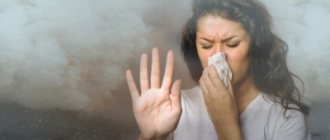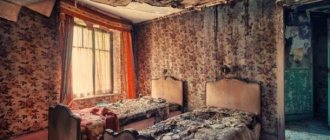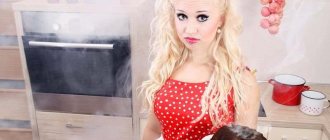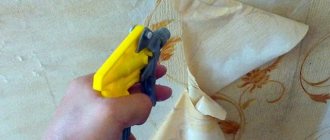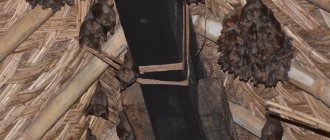A fire is not a pleasant situation. In addition to causing damage to your property and spending money on restoring repairs and buying new furniture, you will also have to thoroughly clean the room and remove traces and the smell of burning. To make this procedure easier, it is worth getting acquainted with the stages and specifics of cleaning after a fire.
To effectively remove burning from furniture and other objects after a fire, use only a suitable product. To achieve high-quality cleaning results, you need to follow consistent instructions, since each surface is cleaned of soot and soot differently.
Stages of apartment processing
To avoid more contamination of things and furniture, clean the room in stages. This will not only prevent additional damage, but also more comfortably get rid of burning and soot.
We take things out
Before cleaning after a fire, immediately clear the room of furniture and belongings. If the weather is good, take everything outside. It doesn’t matter what exactly was damaged by the fire - furniture, decorative items or household appliances, after the fire all things will smell like burning, so they must be taken out into the air and thoroughly ventilated.
We remove curtains, clean drywall, carpets, baseboards
Fabrics and wool absorb odor best, so you need to get rid of them first. Remove all window textiles and wash several times.
The smell of burning and soot is well absorbed into wallpaper, baseboards and drywall, so it is better to immediately dismantle these elements from the room affected by the fire.
Getting rid of garbage
After a fire, many things turn into garbage, which also needs to be thrown away. When removing linoleum and other materials, small debris will appear. Get rid of anything that will interfere with cleaning the room. Also remember to remove paint and wallpaper from walls and ceilings.
Dry cleaning
Use a vacuum cleaner or broom to remove dust and soot from the floor, walls and ceiling. Never use wet rags, otherwise you will simply smear dirt across the surface. The best option would be to use a vacuum cleaner with a nozzle with a tapered spout.
Cleaning the ceiling and walls
After a fire, clumps of soot hang from the ceilings. If they are removed with a rag or mop, they can leave stains on the surface that will be very difficult to remove in the future. Take a vacuum cleaner and carefully remove any dirt that has accumulated on top. Alternatively, you can use a spatula or scraper.
How to remove odor
First, open all windows and doors to allow toxic fumes and gases to escape. Then carefully examine all areas of the room that were affected by the fire. Wipe windows, glass, hatches and doors, since even a small amount of soot can spoil the air in the entire apartment.
There are many ways you can remove the burning smell from a room after a fire. You can purchase a special product in the store or use a folk recipe. A humidifier or air purifier will also be an effective assistant. If the device works around the clock, the unpleasant aroma will disappear in a few days.
In everyday life, people use various solutions consisting of vinegar, alcohol, soap or cinnamon.
Useful tips
The ceiling is decorated with chandeliers and all kinds of spotlights. And, of course, even the cleanest ceiling will not sparkle in a new way if there are dusty lighting fixtures on it. It happens that a bulky crystal or glass chandelier with many elements is difficult to remove from the ceiling. Then, using a stable table or stepladder, wash it directly on the ceiling. First, do not forget to unscrew the light bulb and insert paper into the socket.
As for spotlights, it is better to disassemble them for complete cleaning. The room must be de-energized and the lamps carefully removed. If you are afraid that you won’t be able to put everything back in place later, take a photo of the sequence in which you disassembled the structure. You can try to clean the lights without removing them. But then it will not be possible to fully clean the dirt from the inside that has accumulated between the ceiling and the lamp. In addition, there is a risk of damage to the tension surface. You may accidentally press down and enlarge the cuts made for the flashlights. There is also a risk of breaking the connection of electrical wires.
How often to wash the ceiling is up to you. It all depends on how many times a year you do general cleaning in the apartment, whether you wash the floors every day and wipe off the dust. After all, its particles settle on the ceiling, and over time turn into dirt under the influence of various factors. Where the ceiling is located also plays an important role.
A suspended ceiling located in the kitchen loses its original appearance faster than its “brothers” installed in the rooms. No matter how neat the owner is, the hanging structure will get dirty someday, and it will be “decorated” with grease and soot. Tension fabrics here need to be washed much more often than in other rooms, at least twice a year. And if the family is large and the cook is constantly steaming, frying, boiling and baking something, then general cleaning is required even more often. Otherwise, it will be very difficult to clean the ceiling well later.
Other rooms also have their own characteristics:
- In the bathroom, the ceiling suffers from limescale deposits, which in turn form steam and drops. In a large family, it will be useful to install a horizontal curtain; it will protect the upper part of the room from premature plaque.
- The suspended ceiling on the loggia needs to be wiped weekly with a dry towel. Here the coating will constantly gather dust, especially if there is a road nearby.
- In the living room you can afford to install a glossy multi-level ceiling with all kinds of lamps. This structure can be cleaned once a year during global cleaning.
- Fabric and matte canvases are typical for offices and bedrooms. Materials containing an antiseptic layer can simply be wiped with gauze.
- The same applies to hallways. But children’s rooms will most likely need wet cleaning as they become dirty; most likely this will happen more than once a year, or even twice, but much more often.
For more useful tips on how to wash a suspended ceiling, watch the following video.
Necessary equipment
In addition to protective equipment, you will need the following items to clean your house after a fire:
- vacuum cleaner;
- broom and dustpan;
- hard brushes;
- garbage bags and sacks;
- sealant;
- wet rags;
- roller, spray or brush;
- scraper or spatula.
Prepare the necessary equipment in advance so as not to be distracted from work later.
Remedies for burning and soot
To remove soot and soot stains, you can use special chemicals or make a solution yourself.
Chemicals
Domestos does a good job of cleaning soot. This product will not only effectively clean your apartment of soot, but will also disinfect it, also removing unpleasant odors. It is not recommended to use budget products, since they can only harm the surface by absorbing fumes into it.
Substances at hand
You can use various materials at hand for cleaning:
- The room can be cleaned with soapy water. This folk remedy effectively removes stains and eliminates odors. Just dissolve soap in water at the rate of 1 tbsp. spoon of the substance per 1 liter of liquid, and process.
- Dishwashing detergent does a good job of removing soot marks. Pour 5-7 liters of warm water into a bucket and add 1 tbsp. spoon of the substance, stir thoroughly until foam forms and treat all surfaces that need cleaning with the solution.
- Use ammonia and vinegar to clean surfaces. Dissolve 2 tbsp. tablespoons of ammonia and the same amount of vinegar in 5 liters of water and treat surfaces contaminated with soot with the solution.
- To remove traces of soot, soak a napkin or gauze in an alcohol solution and wipe the surface of the walls. Refined gasoline can also be used in a similar way.
- Dissolve 1 tbsp. spoon of soda ash in 1 liter of water and treat surfaces smeared with soot and soot several times with the resulting composition.
- To eliminate odor, use a special solution. Please note that the solution recipe contains hydrochloric acid, so protect yourself first. Mix ammonia and soda in equal quantities, and then add the same amount of hydrochloric acid to the mixture. During the reaction, white smoke will be released, which can eliminate the burning smell. Leave the product in the room, close the windows tightly and leave the room for a day. After exposure, the unpleasant odor should disappear.
Ready set after a fire
The advantage of such sets is their universal action. In addition to effectively washing away burning and soot, the product quickly removes unpleasant odors and poisons after a fire. However, during the cleaning procedure of the room, you need to close all windows and doors, otherwise the substance will simply disappear.
Many preparations differ in their use: some are diluted to form foam, while others can be used in the form in which you bought them. Therefore, before cleaning the apartment, carefully read the instructions for use and follow the recommendations.
Causes of suspended ceiling contamination
Dust is the main cause of stains and dirt. The use of antistatic agents is only 10-15% effective. Yes, they work, but only if the kitchen is rarely used.
When settling on the surface, small particles create a feeling of unkemptness, impart yellowness, and blur the gloss. Caring for suspended ceilings in the kitchen is not difficult, but a lot depends on the quality of the finishing material.
There are 3 causes of pollution:
- Fat particles bounce off the pan on the stove and settle on the ceiling.
- Steam rises during cooking, forming condensation and gradually drying out.
- Nicotine, the tars of which are difficult to remove.
It is recommended to select the cleaning method depending on the type of contamination. Stretch ceilings are a common finishing material. It has certain advantages:
- durability;
- stylish look;
- variety of surfaces (glossy, matte, mirror);
- ease of care.
Maintaining the aesthetic appearance of a stretch ceiling is not difficult. This is primarily achieved through regular wet cleaning.
Manufacturers and installation specialists have established several basic operating rules. By following them, you will extend the life of the ceiling, and the canvas will look like new.
Professional compounds for removing soot and soot
Not all professional kits are effective against burning and soot after a fire. Let's look at the most popular companies that have established themselves as manufacturers of high-quality products for cleaning apartments from soot and unpleasant odors.
Facade cleaner No. 2
The product effectively copes with fumes on metal, brick and concrete surfaces. The extract is mixed in a proportion of 100-200 ml per 1 liter of water. Apply the mixture to contaminated areas of the façade and rinse off with clean water after 10 minutes. The procedure will require a roller, sprayer or brush.
"Pure Deso"
The substance is intended to remove burning odors after a fire. Mix 2 mg of Chist Dezo with 10 liters of water and apply to the surface. The peculiarity of the drug is the process of removing unpleasant odors. If analogues are distilled by replacing their own smell, then the “Chist Dezo” composition destroys the molecules, as a result of which the burning smell simply disappears.
The drug can also be used to remove stench from upholstered furniture, wood, wallpaper and other interior elements.
Mazbit+
The concentrate is intended for removing soot from the facade areas of the house. The special feature of Mazbit+ is its composition, which copes well with soot. The standard proportions with water are 1/3, but for severe contamination, the dose can be increased to 1/1.
Mazbit+ does not contain explosive elements, but it does contain alkalis. In this regard, before use, put on rubber gloves, a raincoat and a hat. In case of contact with eyes, rinse immediately with clean water.
BZ 20
The purpose of the product is to clean kitchen stoves, ovens, stoves, fryers, ventilation systems and pipelines on a domestic and industrial scale. BZ 20 contains powerful alkalis that quickly remove all fatty contaminants. The concentrate can also be used to remove soot from kitchen furniture and walls after a fire. It is used as standard: spray on the contaminated area and after 15 minutes rinse with water and a brush.
"Bitumaz"
An equally effective analogue of BZ 20, the main purpose of which is to remove greasy stains and smoke from kitchen furniture, concrete and brick walls, as well as hoods. Bitumaz contains strong alkalis, so it is recommended to use it only in protective equipment. Mix the concentrate with water in proportions of 1/7, but in varying degrees of contamination you can independently combine the substance with water.
Soot and soot cleaner SYNTILOR Fuoco
The concentrate does not contain toxic chemicals, mercury or other metals, so it can be used in any environment, the main thing is to protect yourself from alkalis. The product is universal, so it can be used both on upholstered furniture and on concrete walls. Mix with water in a ratio of 1/3, after spraying, wash off with clean water.
Additional cleaning services in Moscow
| Price | |
| Singlet oxygen ionizer treatment | from 150 rub. hour |
| Cold fog treatment | from 70 rub. m3 |
| Hot fog treatment | from 50 rub. m3 |
| Ozone treatment of the room | from 5,000 rub. for the service |
| Sandblasting | from 250 rub. m2 |
| Removing burning smell | from 200 rub. m2 |
Cleaning from burning various surfaces
Various materials suffer from soot and soot. It is worth noting that the same method will be effective for one type of surface and absolutely useless for others. In order for the procedure to give the best result, study how various materials behave under the influence of certain substances.
Metal
To clean metal surfaces, use highly concentrated solutions or acids. It is enough to simply treat the contaminated area with the product, and then wash off any remaining dirt with a damp sponge. Be careful, chemicals such as acids or gasoline can cause allergic reactions on the skin and mucous membranes. To prevent this, protect yourself before cleaning.
Abrasive substances based on river sand or crushed bricks also work well with smoke and soot. Add a little water to the dry mixture and apply the resulting slurry to the surface with a sponge. Rub a little and then remove any remaining substances with a wet cloth.
Plastic
Plastic actively absorbs dirt and unpleasant odors, so try to clean plastic surfaces first. To avoid leaving scratches on the coating, first carry out dry cleaning, and only then proceed with wet cleaning.
Use special substances for plastic, dishwashing liquid or an alcohol solution for cleaning. Apply detergent to the surface with a sponge and rinse with water. Repeat the procedure if necessary.
Tree
Wood surfaces are very difficult to care for, so cleaning them from burning and soot can only be done with an integrated approach.
For the best effect, first treat the wooden surface with a dry cleaning method using a broom or vacuum cleaner. This will help prevent soot from penetrating into the structure of the material. Next, carefully rub the coating with sandpaper. When most of the stains have been removed, apply a special wood cleaner and leave for the time specified in the instructions to act. Afterwards, thoroughly wipe the surface with a damp sponge.
Glass
Soot and soot may leave dark stains on the glass. To prevent this, try to wash windows and mirror surfaces as quickly as possible. A vinegar solution works well for cleaning glass. Dilute 1 tbsp. l into 1 liter of water and pour into a container with a spray bottle. Spray the resulting liquid onto the surface and leave for 30 minutes. After the allotted time has passed, rinse off the solution with a sponge soaked in warm water and wipe the glass dry with a dry cloth.
Laminate
You can remove traces of soot and soot from the laminate using kerosene, technical ethyl alcohol or solvent. Simply soak a cloth in the substance and thoroughly treat the surface. Do not forget that the substances used can harm the skin and mucous membranes, so take care of ways to protect the skin and respiratory system.
Water-based paint
Before washing walls or ceilings painted with water-based paint, keep in mind that most substances can harm the painted surface. Solutions of technical or medical alcohol are considered harmless means for cleaning painted walls and ceilings. Dampen a clean rag or gauze in the substance and treat the surface.
Brick
Regular table vinegar is best suited for removing soot from bricks. Be sure to dry clean before processing. Pre-mix vinegar and water in equal proportions. Apply the liquid generously to the surface and carefully wipe off the dirt with a brush.
Textile
It is better to wash textiles by hand, otherwise after washing in the machine a black residue may remain on the drum. To clean textiles, you can use regular washing powder in combination with citric acid. Mix the ingredients in equal proportions and dissolve in water. Soak the product in the solution for half an hour, and then rinse thoroughly with running water.
How to clean burning plastic windows
Cleaning plastic windows is carried out in several stages.
First of all, carry out dry processing and remove traces of soot with a broom or vacuum cleaner.
Next, start cleaning the glass. Use available and purchased substances suitable for such purposes, for example, a vinegar solution or store-bought window cleaning spray.
At the last stage of cleaning, move on to the plastic parts. They can also be cleaned using window cleaning liquid or a solution based on available products, such as soda or alcohol.
How to remove soot and soot from clothes
You can stain your clothes with soot not only when cleaning up after a fire, but also when cleaning a fireplace or stove. There are many proven methods for treating clothes from soot and soot using available means.
The most effective substances are considered:
- Kerosene. Before use, check how the substance affects the material in an inconspicuous area of the product. If all is well, carry out cleaning without fear. Use a cotton sponge and soaked in kerosene to treat problem areas. If the dirt is deeply embedded in the fibers, leave the substance on the surface for 10–15 minutes. After treatment, rinse the item with running water and wash it in a machine.
- Acetone. As with kerosene, check the effect of acetone on the fabric before the procedure. Soak a cotton pad in the substance and wipe away the soot stains. After cleaning, wash off the dirt in a solution of laundry soap, rinse the product and wash it in the usual way.
- White spirit or gasoline. The effect of such substances is also initially tested on an inconspicuous area. Apply solvent to a rag and gently work away the soot marks. Immediately rinse the treated area with warm water. Evaluate the result and repeat the procedure if necessary. After the stains are gone, wash the item.
- Turpentine and egg. For the procedure you will need one egg yolk and 1 tbsp. spoon of turpentine. Beat the yolk into a thick foam and add the substance. Apply the resulting mixture to problem areas and leave for 15 minutes to act. Rinse off any remaining turpentine with running water, and then put the product in the washing machine.
- Soda, vinegar, dishwashing liquid. Mix the ingredients in equal proportions and apply to the soot marks. Wait 10 minutes and rinse off any remaining substances with warm water. After this, wash the product by hand or in a machine.
- Butter. This method is only suitable for materials that can withstand washing in hot water. Apply a piece of butter to the soot stains and wait until it completely softens the fibers. After 20 minutes, wash the product in hot water. Repeat washing if necessary.
- Bread. Try scrubbing off minor fresh stains with bread crumbs preheated in the oven. Roll it into a small ball and treat the stains. If necessary, repeat cleaning, and then wash the item as usual.
You can also use store-bought stain removers for cleaning. The main thing is to make sure that they are suitable for the type of fabric, and also always first study the instructions for use and dosage on the packaging.
How to remove burning smell from clothes?
Clothes can become saturated with smoke not only from a fire, but also from a fire, stove or fireplace. To remove burning smell from clothes, follow these tips and recommendations:
- Wash strong-smelling items separately from other clothes.
- Before washing, pack the items in a bag and sprinkle thoroughly with baking soda. Seal the container tightly and wait at least 2 hours. The soda will absorb the unpleasant odor and, as a result, the clothes will be washed better.
- Use fabric softener. Alternatively, you can pour a little table vinegar into the conditioner dispenser. The effect will be the same.
- Use a steam cleaner to remove odors from outer clothing. Alternatively, you can also fill the bathtub with hot water and hang your jacket directly over the steam for a few hours.
- Before washing, you can soak the items in a solution of ammonia, preparing it from 50 liters of ammonia and 5 liters of warm water. For a better effect, you can add 100 g of laundry soap shavings to the soaking mixture.
Dry your clothes outside and, if possible, leave them in this position for several days.
How to wash vegetable oil (+ sunflower oil)
Most often you have to wash off vegetable oil either from a tile sleeve or from clothing. For the first case, ideal:
- Baking soda is a natural product, not as harsh as a regular cleaning product. A small amount is applied to a damp sponge, after which it is rubbed into the surface with circular movements.
- Any fat solvent - usually sold with a spray bottle.
To remove oil stains from clothes, you can use time-tested methods.
If oil is spilled on the floor:
- Use a dry sponge to collect any remaining residue.
- Make a soap solution - it is advisable to use ordinary laundry soap.
- Wipe the floor with a mop.
It must be remembered that the sooner measures are taken, the more reliable the result.
If oil gets on your clothes, the main thing is to immediately begin removing it. An old oil stain is almost impossible to remove.
What to do:
- Add a few drops of detergent to the stain. Then put it in the washing machine.
- Sprinkle salt on the stain - this option is suitable for those who are outdoors or in a cafe. The salt will absorb most of the oil, after which the clothes can be washed with a little addition of regular soap.
Salt can effectively solve many everyday problems.
It is better to remove oil from white things using starch. A small amount is added to the stain, after which the item is washed in a soap solution. It is better to do this before the oil is completely absorbed and dries.
They sprinkle the dirt in dry form and wait for some time.
Precautions when cleaning an apartment after a fire
The main thing in the process of cleaning after a fire is to protect yourself, since toxic substances in fire residues, and even cleaning chemicals, can be harmful to health.
Take precautions, namely:
- clean with rubber gloves so as not to damage the epidermis;
- When cleaning, a lot of debris will fall from the ceiling, so wear a hat;
- clean only with a gauze or medical bandage to avoid breathing toxic fumes;
- put on old clothes and throw a raincoat on top;
- ventilate the room well;
- increase the humidity in the room.
If you are not confident in your abilities or cannot devote enough time to cleaning, it is better to use the services of a cleaning service.
Cleaning up after a fire is not an easy task. To increase the speed and efficiency of room treatment, follow the sequence of actions and use only substances suitable for various surfaces. With the right approach, you can restore an attractive appearance to a burnt room.
Basic recommendations
Soot, also called soot or soot, is small particles of materials that have not burned completely. In order to wash it, you will have to use fairly aggressive methods. The main feature is that soot has one very insidious property: if you add even a little water to it, it will turn from a dry substance into a fatty sticky mass. That is why you should not try to wash off the soot with water, or wipe it off with wet rags. This way you will drive it even deeper into microcracks in the ceiling, floor or walls.
When talking about how to clean soot, you should pay attention to the fact that you need to exclude the following products:
- water;
- liquid or laundry soap;
- sponges and any hard brushes.
All of the above products can be used only after carbon deposits have been removed from wood or other surfaces. In order to clean soot from surfaces, it is necessary to use personal protective equipment. You will need:
- glasses;
- robe;
- headwear, such as a cap or scarf;
- respirator (you can replace it with a regular gauze bandage);
- latex gloves.

